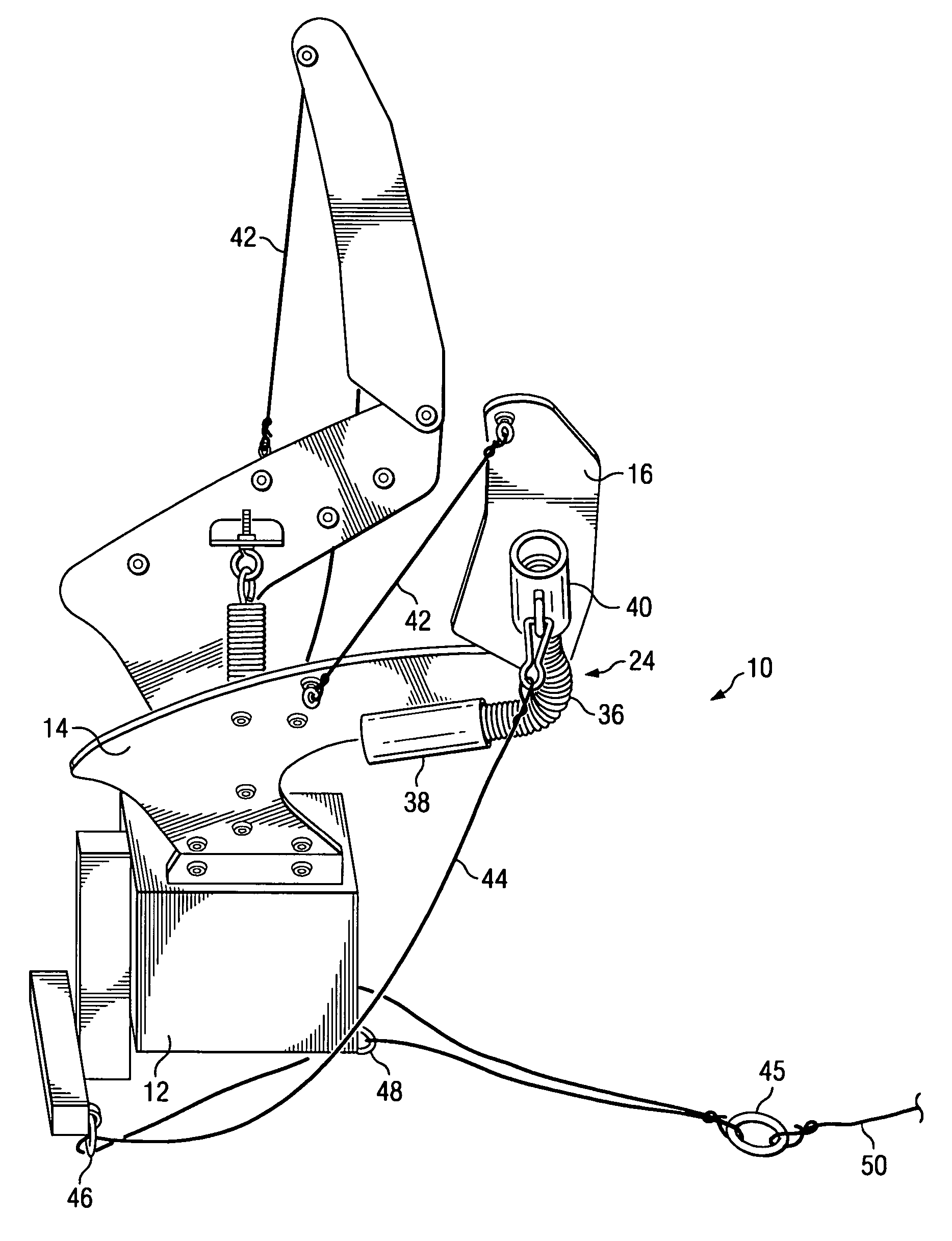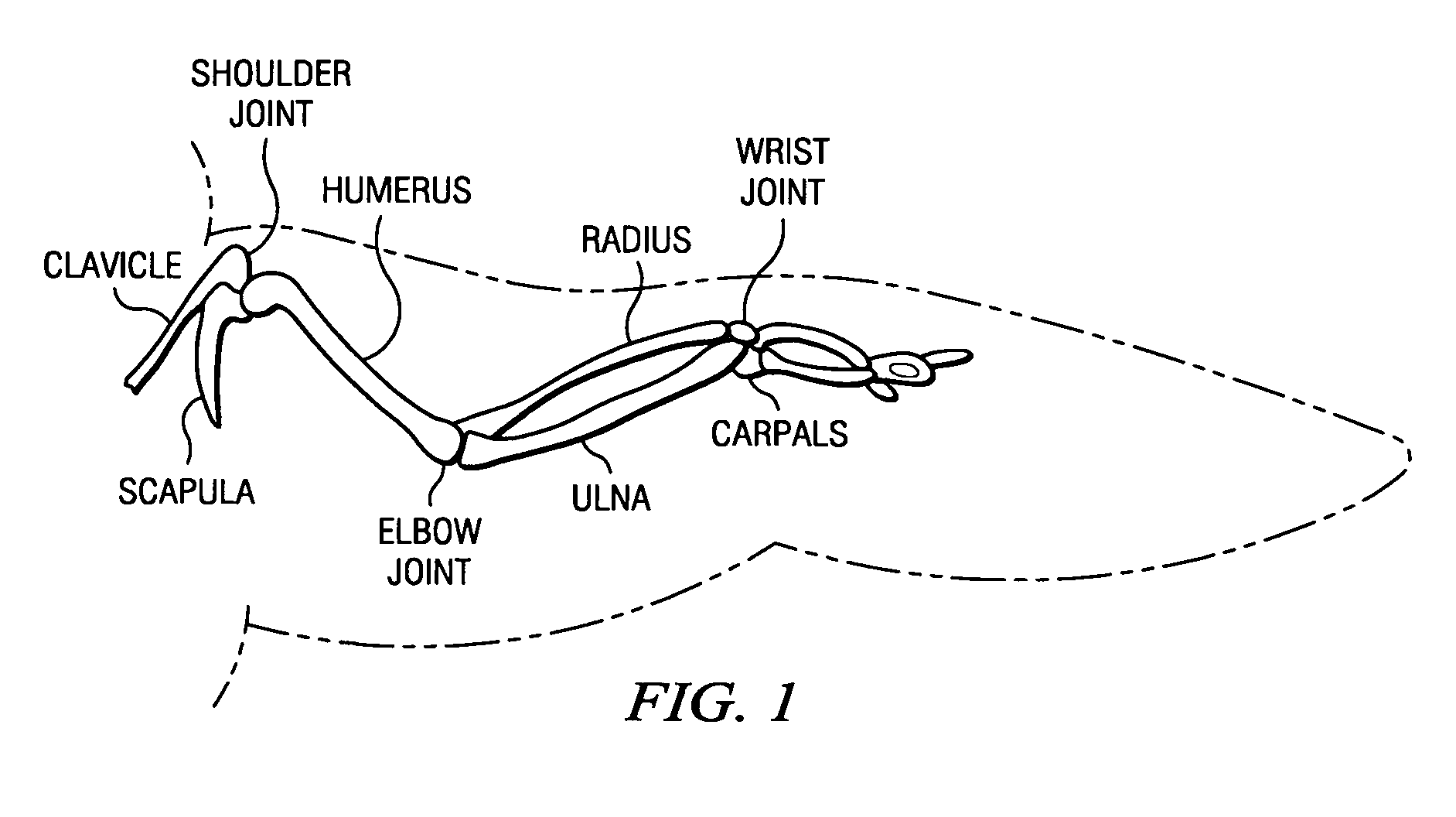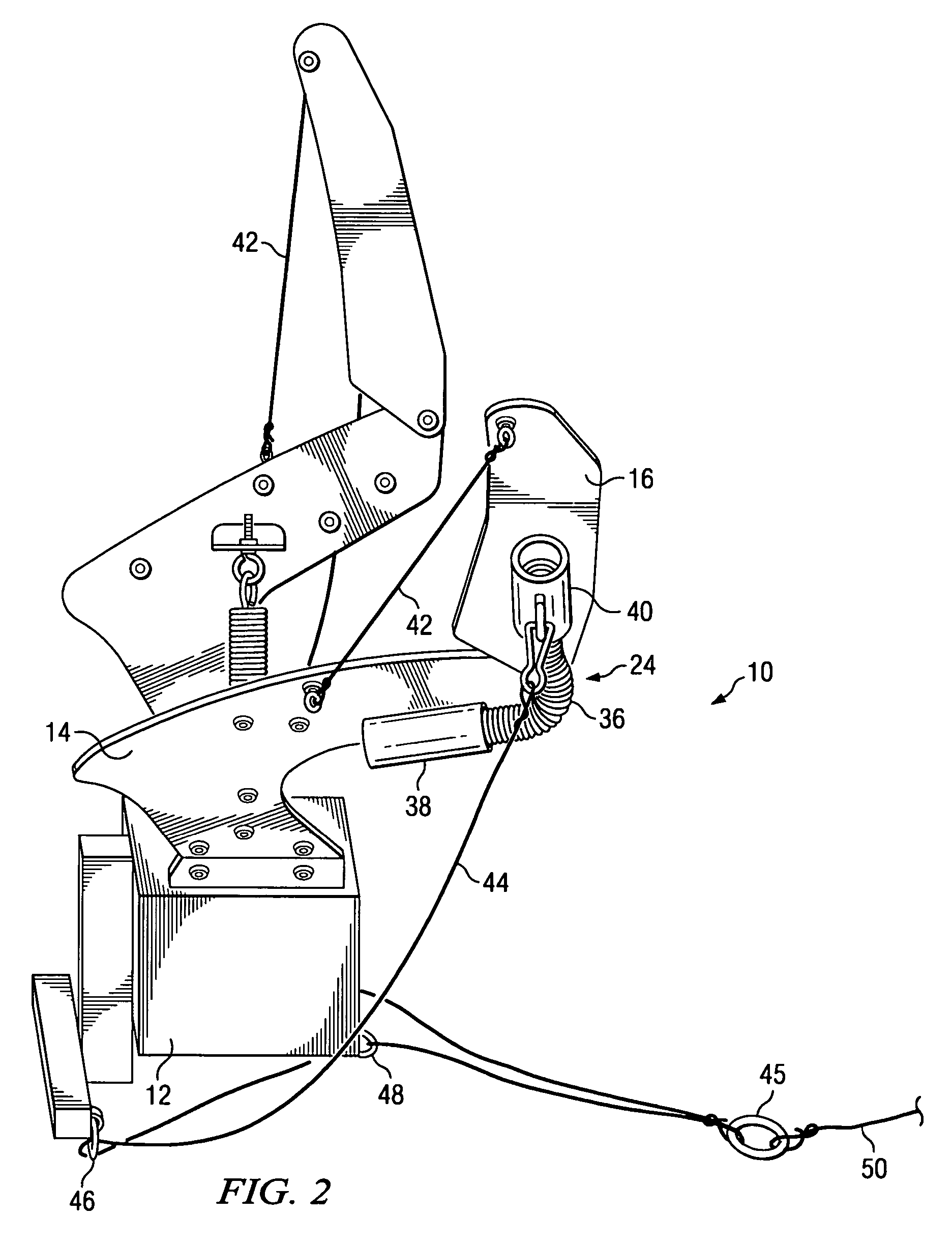Wing structure for a waterfowl decoy
a technology for waterfowl and wing structure, which is applied in the field of wing structure for waterfowl decoys, can solve the problems of affecting the effectiveness of the decoy, affecting the flight of the decoy, so as to achieve the effect of lowering the elevation of the decoy
- Summary
- Abstract
- Description
- Claims
- Application Information
AI Technical Summary
Benefits of technology
Problems solved by technology
Method used
Image
Examples
Embodiment Construction
[0024]The gross skeletal structure of a natural waterfowl wing is similar to the forearm or foreleg skeletal structure of a nonwinged vertebrate. In particular, as is shown in FIG. 1, a generalized bird wing features a shoulder joint where the bird humerus articulates against and is supported by a clavicle and scapula. In addition, the generalized bird wing of FIG. 1 shows an elbow joint between the distal end of the humerus and radius and ulna bones. Finally, as is the case with flightless vertebrates, the distal end of the radius and ulna bones forms an articulated wrist joint with numerous carpals.
[0025]During flight, a bird flaps its wing up and down with articulation occurring primarily at the shoulder joint. Throughout a wing beat downstroke, only limited motion occurs at a waterfowl elbow or wrist joint. Some flexing occurs at the wrist joint during the recovery stroke, which is the wing beat upstroke. At rest, a waterfowl will fully articulate its shoulder joint to bring the...
PUM
 Login to View More
Login to View More Abstract
Description
Claims
Application Information
 Login to View More
Login to View More - R&D
- Intellectual Property
- Life Sciences
- Materials
- Tech Scout
- Unparalleled Data Quality
- Higher Quality Content
- 60% Fewer Hallucinations
Browse by: Latest US Patents, China's latest patents, Technical Efficacy Thesaurus, Application Domain, Technology Topic, Popular Technical Reports.
© 2025 PatSnap. All rights reserved.Legal|Privacy policy|Modern Slavery Act Transparency Statement|Sitemap|About US| Contact US: help@patsnap.com



